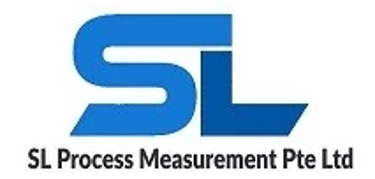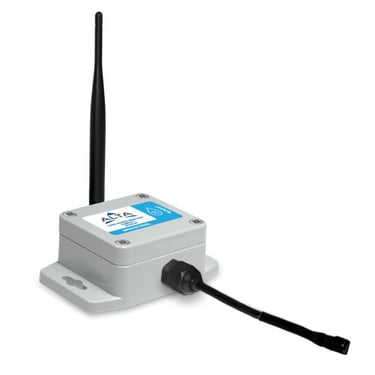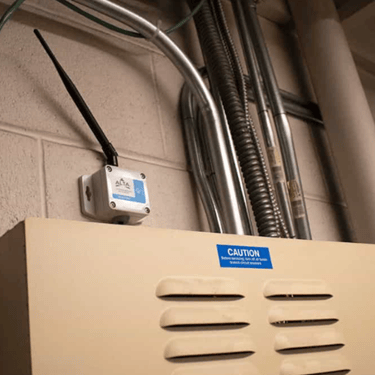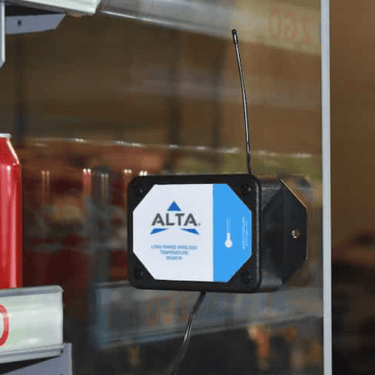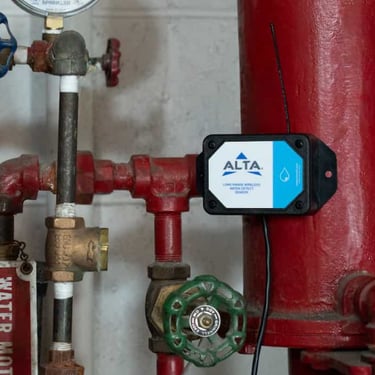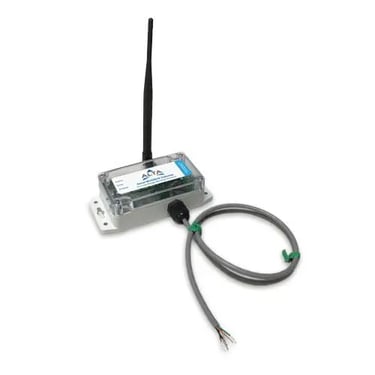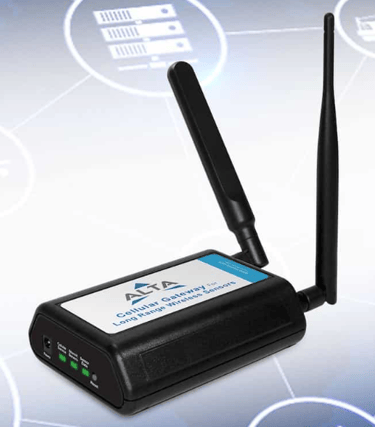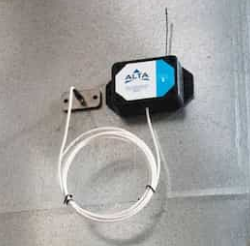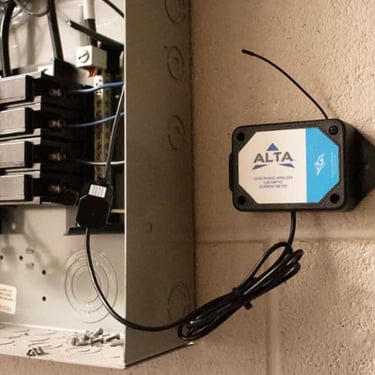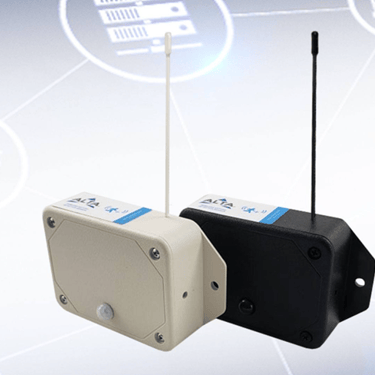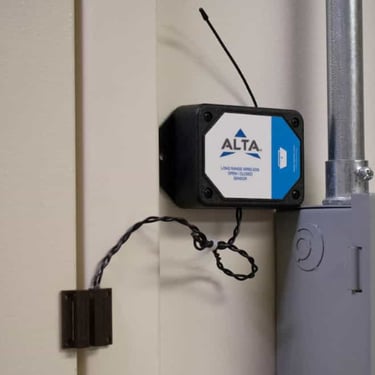Data Center
Providing compliant monitoring for various critical industries and sectors.
Data Center Network Diagram
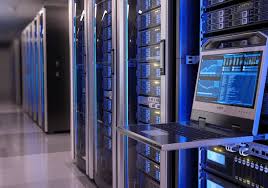

Radio Frequency with +-100m range


RS485
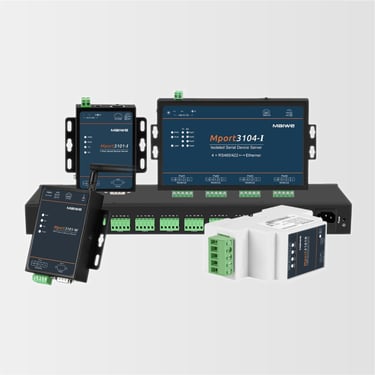

PLC / Scada / BMS
Modbus RTU Client


Radio Frequency with +-100m range
OR
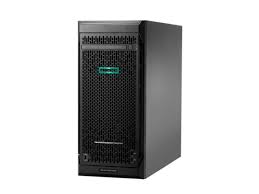

PLC / Scada
Modbus TCP Client
RJ45 Lan
Data center temperature and humidity monitoring is important to ensure the efficiency and longevity of equipment.
Monitoring challenges
Temperatures: The American Society of Heating Refrigerating and Air-Conditioning Engineers (ASHRAE) suggests server rooms and data centers maintain a temperature between 18°C (64.4°F) to 27°C (80.6°F). Monnit provides Standard and Digital Temperature Sensors designed to audit ambient environments from -40°C (-40°F) to +125°C (+257°F). One example of how Monnit helps you strike a balance with temperature and mitigate downtime using our solutions for server room temp monitoring.
Duct Temperature: Lack of cooling efficiency is one of the critical issues troubling data centers worldwide. A Wireless Duct Temperature sensor comes with an 8 ft. (96 in.) lead wire to feed through data center or server room HVAC vents. Monnit has the health of your ventilation system and data center in mind, freeing you from anxiety and stress.
Humidity: Striking the right balance of 40% and 60% relative humidity (RH) is key to ensuring a data center functions properly. A Monnit Wireless Humidity Sensor keeps static electricity from building up and regulates corrosion in your equipment. These sensors also deliver readings on temperatures between -40°C (-40°F) and +125°C (+257°F). Our data center temperature and humidity sensors are another way Monnit manages conditions to provide an environment for optimal performance.
Power Consumption: Data centers and server rooms consume vast amounts of power. Accurately measuring power drainage with a Monnit Wireless AC Current Meter is the first step to reducing costs. Select from the 20 Amp, 150 Amp, and 500 Amp. Facility managers can also use the Current Meters to monitor HVAC and environmental control systems. Managing power consumption can be as easy as trusting Monnit to give you accurate energy readings from our monitoring sensors.
Power Loss: Monnit Voltage Detectors are the best computer room, data center, and server room sensors to read the flow of electricity and evaluate if power comes through a direct current (DC). Data center managers can modify the Monnit Wireless Voltage Detection Sensor settings to alert on voltage presence or absence from their mobile device or computer. If your equipment is at risk of shutting down unexpectedly, Monnit has the right monitoring solution for you.
Water presence: Managing water leaks is critical to a data center's operation—especially for server water cooling systems and nearby plumbing. Even a small water leak can be catastrophic. That's why Monnit provides a variety of water detection devices for data centers and server rooms. Water Detection Plus and Water Pucks are best when placed where leaks are likely to occur. Water Rope Sensors audit liquid presence anywhere along the cable length. Any combination of these will help you harness leaks and protect your equipment.
Security (Motion & Occupancy): Data centers require strong physical security measures; that's why it's essential to use our Wireless Motion Detection Sensor to track traffic and activity. A Monnit Wireless Motion Detection Sensor reads activity using passive infrared (PIR) technology, so there's no risk of a picture or video imaging misuse in compliance with confidentiality protocols. If added security and a complete wireless data center monitoring system are your top priorities, Monnit is here to help.
Security Open & Closed Door: The door to your data center or server room has one design flaw. For every server to work its best, the door must be closed. A Monnit Wireless Open-Closed Sensor is the best way to ensure your access points are secure and enhances your server room temperature monitoring. The Open-Closed Sensor works by detecting a magnet's connection to assess if a door is open or closed. This device's owners never wonder if they left the door open, they know with instant alerts over email, phone, or call. As with all Monnit sensors, features include automatic data-logging and storage to our cloud based software.
Why Data Center Temperature Monitoring Is Important
Data center temperature monitoring helps:
Protect equipment and extend its lifespan. Effective temperature monitoring prevents overheating, which can damage hardware and reduce the lifespan of critical equipment.
Maintain uptime and reliability. Almost 30% of unplanned data center outages are a result of environment issues. By continuously tracking temperatures, data center managers can prevent thermal issues that lead to equipment failure, enabling better uptime and operational stability.
Improve energy efficiency and reduce costs. Monitoring temperatures allows for optimized cooling strategies to reduce energy consumption and operational expenses while maintaining optimal conditions. Data centers can save 4% to 5% in energy costs for every 1°F increase in server inlet temperature.
Common Challenges in Data Center Temperature Management
Effective temperature management in data centers faces several challenges that can undermine energy efficiency and reliability.
Lack of comprehensive data and monitoring. Intelligent data center temperature management relies heavily on accurate, real-time data from temperature sensors. Limited or outdated monitoring systems can lead to inadequate insights into temperature variations and inefficiencies. Without sufficient data, it becomes challenging to identify hot spots, optimize cooling strategies, and proactively respond to temperature fluctuations.
Balancing efficient and equipment protection. Striking the right balance between energy savings and maintaining safe temperatures for hardware is critical. Overcooling waste energy and inflates costs, while undercooling risks overheating and potential hardware failure.
Hot spots and airflow optimization. Managing uneven temperature distribution and hot spots is complex due to factors like poorly configured cooling systems, airflow obstructions, and the layout of equipment in racks.
High-density computing. Modern data centers often have high-density racks that generate significant heat, requiring more sophisticated cooling solutions. Standard cooling methods may not suffice, pushing the need for innovative approaches like liquid cooling.
Scalability and adaptability. As data centers grow or change, temperature management systems need to scale or adapt accordingly. Implementing solutions that can be modified without significant infrastructure overhauls poses a challenge.
Energy consumption and sustainability goals. Managing temperature efficiently while aligning with sustainability targets requires investments in advanced technologies and strategies. Achieving these goals can involve eco-friendly cooling methods and modern data center management software to optimize efficiency.
Addressing these challenges with a clear strategy requires holistic monitoring solutions and sensors to maintain optimal temperature for the data center.
How Data Center Temperature Monitoring Works
It is essential that data center temperature monitoring is a priority as it can directly influence equipment lifespan, energy efficiency, and uptime.
Here’s how it works:
Deploying data center temperature sensors. Temperature sensors measure the temperature in real-time, providing data that can help inform good data center temperature management practices.
Selecting reliable temperature sensor. Select from low temperature, high temperature, duct mount of digital temperature sensors
Placing temperature sensors. ASHRAE recommends six sensors in each rack: one at the top, middle, and bottom of both the front and back.
Transmit the data via Modbus TCP or Modbus RTU to your Building Management System (BMS).
Bringing It All Together
Effective temperature monitoring is essential for any data center aiming to balance operational efficiency, equipment protection, and cost savings. As global temperatures and data processing demands rise, maintaining optimal temperature in data centers can be challenging, especially when cooling alone consumes nearly half of the facility's power. These monitoring data empower data centers to make data-driven decisions that optimize cooling efficiency and extend equipment lifespan, ultimately contributing to a more sustainable and cost-effective operation.


Pharmaceutical Monitoring System
Compliant solutions for continuous temperature tracking and monitoring.
1,000$




Data Center Monitoring
Advanced compliance for critical temperature and humidity systems.
2,500$
Semiconductor
Seamless monitoring for pharmaceutical and semiconductor industries.
Warehouse Compliance Solutions
Precision monitoring systems tailored for warehouse environments.
3,500$






Continuous Data Tracking
Optimized for compliance and quality assurance in data centers.
4,000$
Innovative Monitoring Solutions
Comprehensive systems for compliance in critical monitoring applications.
5,000$
Continuous Compliance Services
Expert solutions for pharmaceutical and semiconductor monitoring needs.
6,000$

The continuous monitoring system has greatly improved our compliance and efficiency in the warehouse operations.
John Doe

We rely on their CFR21 Part 11 compliant solutions for seamless monitoring in our pharmaceutical facility.
Jane Smith

★★★★★
★★★★★
SL Process Measurement Pte Ltd
50 Gambas Crescent,
#10-15 Proxima@Gambas,
Singapore 757022
Kuala Lumpur, Penang
Tel / Whatsapp: +6011 55524838
Email: sl@slmeasurement.my
© 2024-2025. All rights reserved.
Johor, Singapore
Tel / Whatsapp: +65 87422778
Email: sl@slmeasurement.com.sg
Contact us for inquiries and professional support.
